Fort Gregg-Adams, in Prince George County, Virginia, United States, is a United States Army post and headquarters of the United States Army Combined Arms Support Command (CASCOM)/ Sustainment Center of Excellence (SCoE), the U.S. Army Quartermaster School, the U.S. Army Ordnance School, the U.S. Army Transportation School, the Army Logistics University (ALU), Defense Contract Management Agency (DCMA), and the U.S. Defense Commissary Agency (DeCA).

The Second Battle of Fort Fisher was a successful assault by the Union Army, Navy and Marine Corps against Fort Fisher, south of Wilmington, North Carolina, near the end of the American Civil War in January 1865. Sometimes referred to as the "Gibraltar of the South" and the last major coastal stronghold of the Confederacy, Fort Fisher had tremendous strategic value during the war, providing a port for blockade runners supplying the Army of Northern Virginia.

The Battle of Fort Sumter was the bombardment of Fort Sumter near Charleston, South Carolina by the South Carolina militia. It ended with the surrender by the United States Army, beginning the American Civil War.
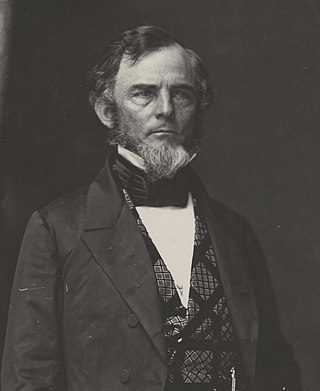
Gideon Johnson Pillow was an American lawyer, politician, speculator, slaveowner, United States Army major general of volunteers during the Mexican–American War and Confederate brigadier general in the American Civil War.

The New Mexico campaign was a military operation of the trans-Mississippi theater of the American Civil War from February to April 1862 in which Confederate Brigadier General Henry Hopkins Sibley invaded the northern New Mexico Territory in an attempt to gain control of the Southwest, including the gold fields of Colorado and the ports of California. Historians regard this campaign as the most ambitious Confederate attempt to establish control of the American West and to open an additional theater in the war. It was an important campaign in the war's Trans-Mississippi Theater, and one of the major events in the history of the New Mexico Territory in the American Civil War.

The Battle of Fort Stevens was an American Civil War battle fought July 11–12, 1864, in what is now Northwest Washington, D.C., as part of the Valley Campaigns of 1864 between forces under Confederate Lieutenant General Jubal Early and Union Major General Alexander McDowell McCook.

The Second Battle of Winchester was fought between June 13 and June 15, 1863, in Frederick County and Winchester, Virginia as part of the Gettysburg Campaign during the American Civil War. As Confederate Lieutenant General Richard S. Ewell moved north through the Shenandoah Valley in the direction of Pennsylvania, his corps defeated the Union Army garrison commanded by Major General Robert H. Milroy, capturing Winchester and numerous Union prisoners.

The First Battle of Fort Fisher was a naval siege in the American Civil War, when the Union tried to capture the fort guarding Wilmington, North Carolina, the South's last major Atlantic port. Led by Major General Benjamin Butler, it lasted from December 24–27, 1864.
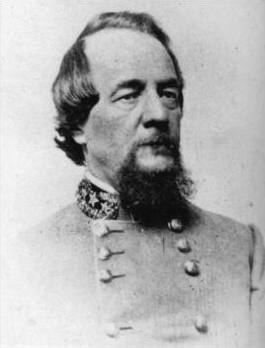
Edward "Allegheny" Johnson was a United States Army officer and Confederate general in the American Civil War. Highly rated by Robert E. Lee, he was made a divisional commander under Richard S. Ewell. On the first evening of the Battle of Gettysburg, Ewell missed his opportunity to attack Cemetery Hill, and Johnson opted against attacking Culp's Hill, for which he had a discretionary order, though he attempted this on the second and third days. Ewell and Johnson are blamed by many for the loss of this decisive battle.

Richard Heron Anderson was a career U.S. Army officer, fighting with distinction in the Mexican–American War. He also served as a Confederate general during the American Civil War, fighting in the Eastern Theater of the conflict and most notably during the 1864 Battle of Spotsylvania Court House. Anderson was also noted for his humility.

Fort Davis National Historic Site is a United States National Historic Site located in the unincorporated community of Fort Davis, Jeff Davis County, Texas. Located within the Davis Mountains of West Texas, the historic site was established in 1961 to protect one of the best remaining examples of a United States Army fort in the southwestern United States.

The Battle of Secessionville was fought on June 16, 1862, during the American Civil War. Confederate forces defeated the Union's only attempt to capture Charleston, South Carolina, by land. It's noted for the court martial of the Union Brig. Gen. Henry Benham for trying to take James Island, which was against the orders given.
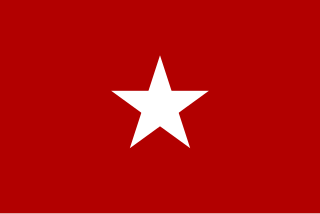
The Army of New Mexico, also known as the Sibley Brigade, was a small Confederate field army in the American Civil War. It operated in Confederate Arizona and New Mexico Territory during the New Mexico Campaign in late 1861 and early 1862, before it was transferred to Louisiana. At first the force was tasked with securing Confederate Arizona's forts, most of which were still in Union hands. John R. Baylor had already established the Confederate Territory of Arizona after the First Battle of Mesilla in 1861. Now the goal was to capture the remaining U.S. held forts in Confederate Arizona and to invade New Mexico Territory. The army also hoped to capture the mines of Colorado and California, to secure gold and silver supplies to finance the Confederate war effort. Ultimately, the Confederate plans were thwarted at the Battle of Glorieta Pass.
The trans-Mississippi theater of the American Civil War was the scene of the major military operations west of the Mississippi River. The area is often thought of as excluding the states and territories bordering the Pacific Ocean, which formed the Pacific coast theater of the American Civil War (1861–1865).
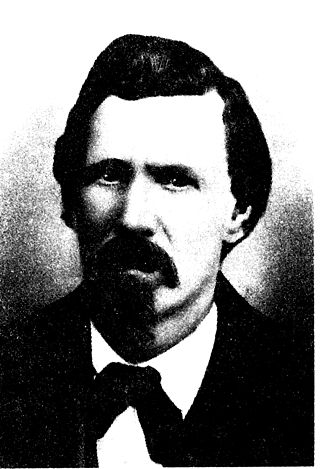
William J. Brady was an American soldier, politician, and law enforcement officer who served as the sheriff of Lincoln County during the Lincoln County Wars in New Mexico, United States. He was murdered in an ambush, aged 48, by the Lincoln County Regulators and Billy the Kid.

The 20th Indiana Volunteer Infantry Regiment was an infantry regiment that served in the Union Army during the American Civil War. The Regiment was officially raised on July 22, 1861, by William L. Brown, the first Colonel of the Regiment, in response to President Lincoln's call for volunteers. At the time of muster, the regiment had 9 fighting companies lettered A-K along with a staff company for a total of 10 companies, roughly 1000 men. The 20th Indiana saw engagements in most of the major battles of the American Civil War, including the action between the first ironclads at Hampton Roads, the Battle of Fredericksburg, the Battle of Gettysburg, and the Siege of Petersburg. The Regiment was part of the 1st Brigade, 3rd Division, III Corps for the duration of the war.

The siege of Suffolk, also known as the Battle of Suffolk, took place from April 11 to May 4, 1863, near Suffolk, Virginia during the American Civil War.
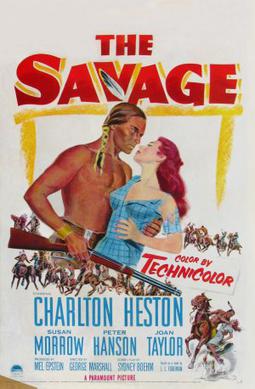
The Savage is a 1952 American Technicolor Western film directed by George Marshall. The film stars Charlton Heston, Susan Morrow, and Peter Hansen. Much of The Savage was shot in the Black Hills of South Dakota. The film is based on L. L. Foreman's novel, The Renegade, first published in 1949 by Pocket Books.
Hispanics in the American Civil War fought on both the Union and Confederate sides of the conflict. Not all the Hispanics who fought in the American Civil War were "Hispanic-Americans", in other words citizens of the United States. Many of them were Spanish subjects or nationals from countries in the Caribbean, Central and South America. Some were born in a US Territory and therefore did not have the right to US Citizenship. It is estimated that approximately 20,000 Hispanics, mostly Mexican-Americans, Puerto Ricans and Cubans living in the United States joined the war: 2,500 for the Confederacy and 1,000 for the Union. This number increased to 10,000 by the end of the war.
The Army of Occupation was the name of the U.S. Army commanded by Zachary Taylor during the Mexican–American War.
















